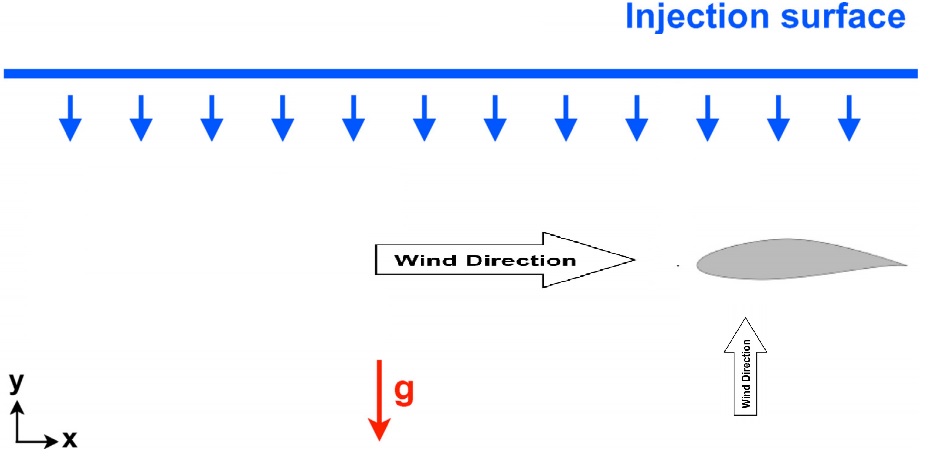Full Page
Contents
Abstract
N/A
Introduction
Axial fans have many used in industries, one of them is for air cooled chillers and cooling towers. Cooling tower and chillers are of great importance in industries, and their performance relies heavily on evaporative cooling. Since the airflow is crucial to the thermal performance, fillers are designed such that the airflow quality could be maintained. Rain droplets from heavy rain may affect the air flow behavior of the systems.
Computational fluid dynamics have been used to analyze air-droplets multiphase before. Cai et al. (2012) performs a CFD simulation to analyze performance of wind turbine during heavy rain condition. Cohan and Hamid (2016) performs an analysis of rain and surface property wind turbine performance using multiphase CFD analysis. The analysis on propeller and fan under raining condition however, have yet to be investigated. The objective of this study is as follows:
1) To investigate the effect of rain intensity on the pressure difference created;
2) To give suggestion on the possible future experimental research based on the numerical simulation results;
Methodology
Software Description
Simulation is done on CFDSOF, a CFD software developed by CCIT group. Both numerical simulation as well as mesh generation is done using this software. Paraview is used for post processing
Assumptions
The assumption and constrain applied are as follows
1) gravity is assumed to be constant 9.8 m/s^2
2) The model is turbulent using SST k-omega model
3) Multiphase model is set by coupling DPM and VOF models
4) Constant mass-flow rate.
5) Constant frame-motion, rotational movement. This is converted to 2D relative motion to reduce computation load.
6) Calculation will not involve energy equation.
7) Air-water flow system will be used. Air and water density is assumed to be constant.
Model setup
The blade geometry is designed using the blade element theory, with diameter of the blade being 2.4m, six blade with vertical air massflow of 14 kg/s and vertical water massflow of 22 kg/s based on cooling tower of 100 nominal tons. The analysis will be done using 1 blade tip analysis, such as being used in Cohan(2016) and Cai(2012). The horizontal wind velocity will be assumed to be the same as tip velocity. The airfoil used would assume zero angle of attack by using NACA airfoil such as mentioned in Ho Yan (2012), Vohra (2017) and Dixon (2010). The apparatus of the simulation is shown in the picture below
Parameters to be Analyzed
Lift coefficient as well as drag coefficient and pressure coefficient of the blade under rain will be compared to the values under no-rain condition.
Results and Discussion
Conclusion
Acknowledgement
This research was conducted to complete the computational fluid dynamics class, in Mechanical Engineering Department, University of Indonesia, as the final project. The author thanks Dr. Ahmad Indra as our advisor as well as fellow classmates which has provided the author with helps.
References
Cohan, A. C., & Arastoopour, H. (2016). Numerical simulation and analysis of the effect of rain and surface property on wind-turbine airfoil performance. International Journal of Multiphase Flow, 81, 46-53. doi:10.1016/j.ijmultiphaseflow.2016.01.006;
Cai, M., Abbasi, E., & Arastoopour, H. (2012). Analysis of the Performance of a Wind-Turbine Airfoil under Heavy-Rain Conditions Using a Multiphase Computational Fluid Dynamics Approach. Industrial & Engineering Chemistry Research, 52(9), 3266-3275. doi:10.1021/ie300877t Kawahara, A., Chung, P. and Kawaji, M., 2002. Investigation of two-phase flow pattern, void fraction and pressure drop in a microchannel. International Journal of Multiphase Flow, 28(9), pp.1411-1435.
